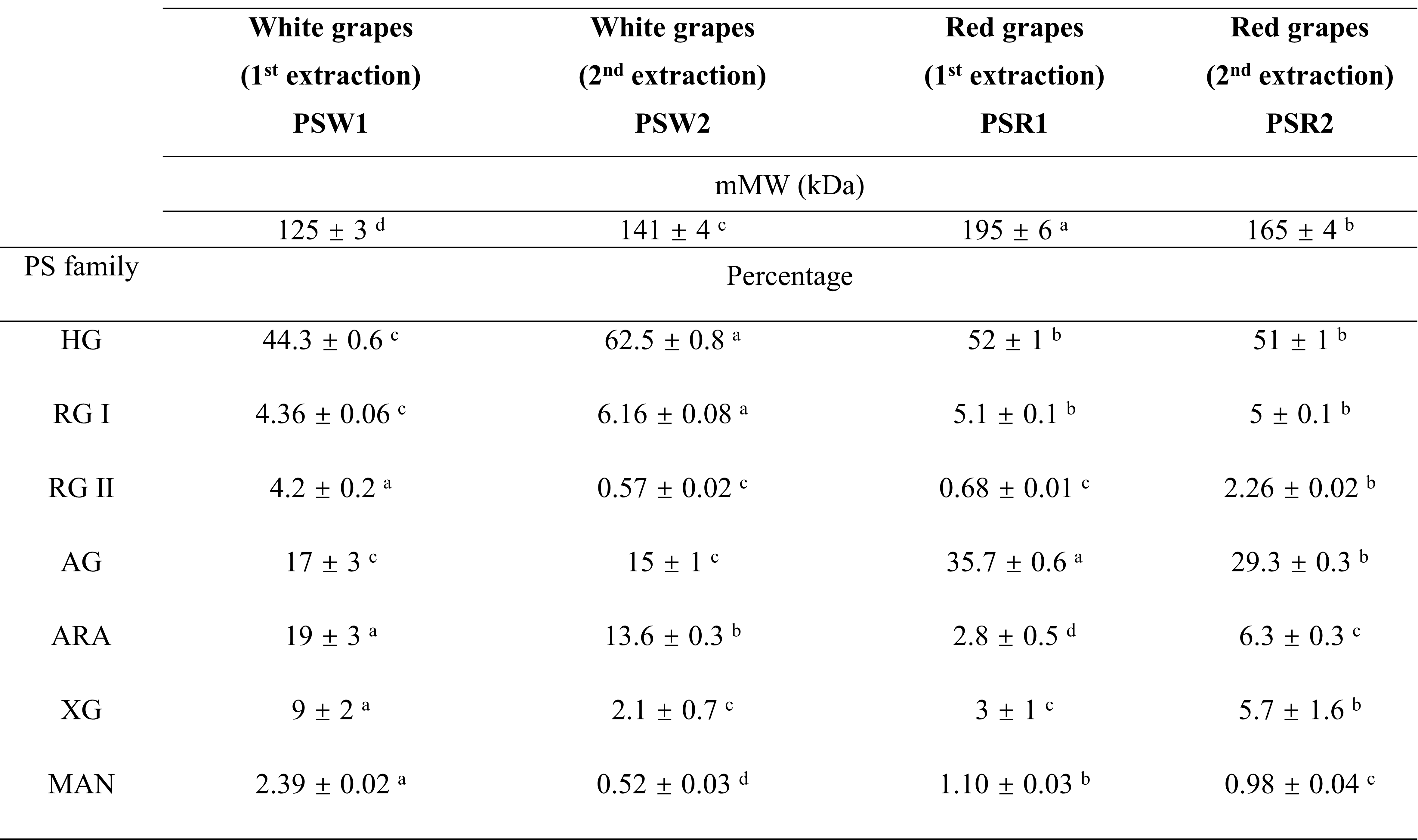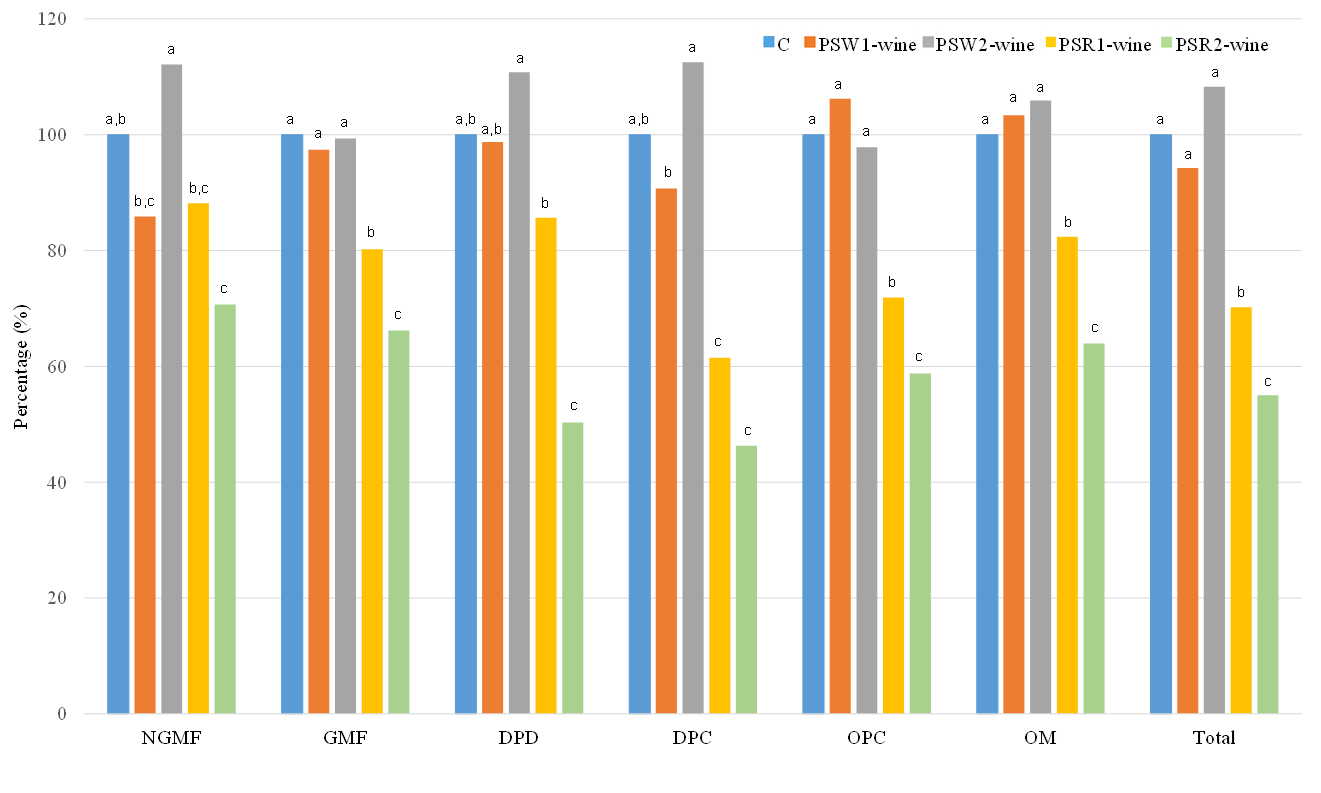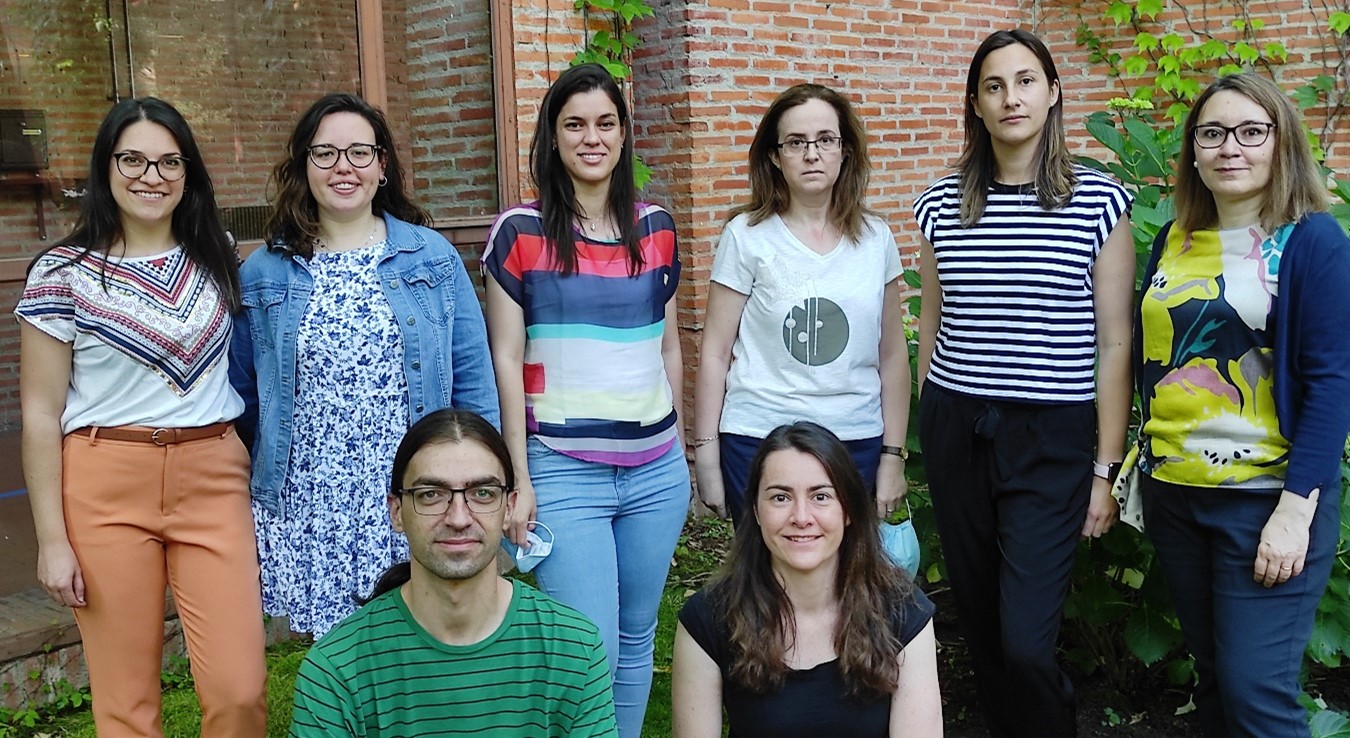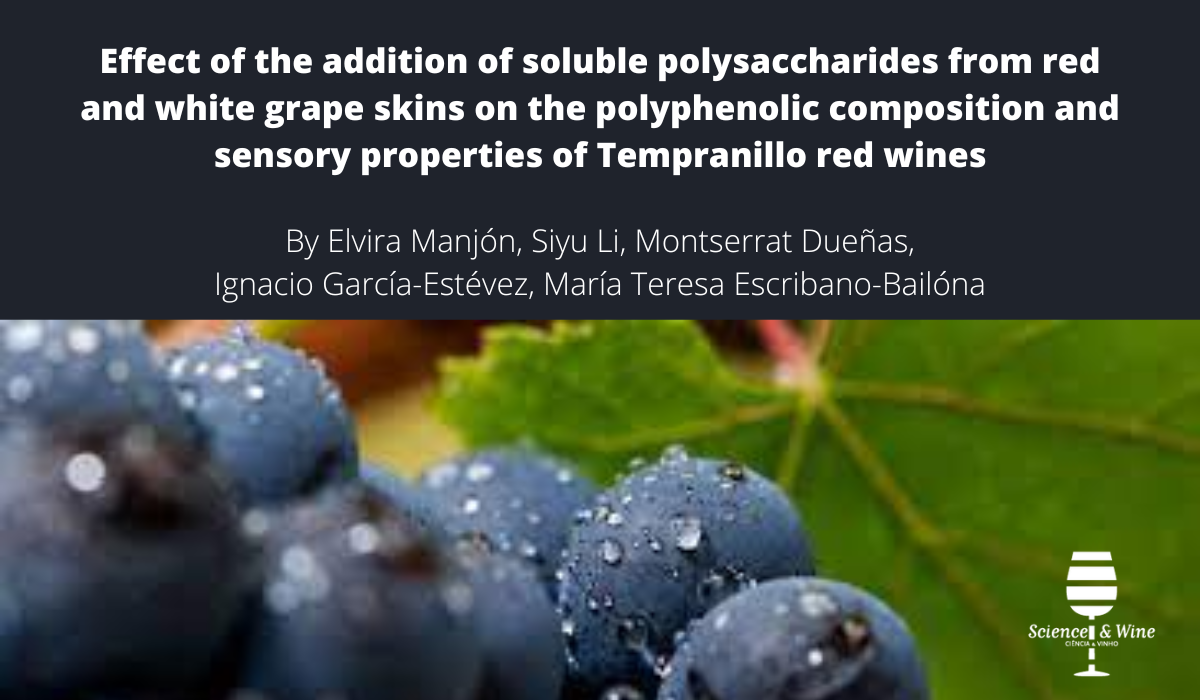Elvira Manjóna, Siyu Lib, Montserrat Dueñasa, Ignacio García-Estéveza, María Teresa Escribano-Bailóna
aGrupo de Investigación en Polifenoles, Facultad de Farmacia, Universidad de Salamanca, Salamanca, E37007, Spain. bInstitute for Horticultural Plants, College of Horticulture, China Agricultural University, Beijing, 100083, China
Technological maturity of grapes (sugar content, titratable acidity and pH of the grape juice) is traditionally used for determining the harvest date. Besides, optimum quantitative and qualitative profile of polyphenols (phenolic maturity) are considered by enologists as key parameters to evaluate grape quality at harvest. Due to the influence of global climate change, the delay between these two types of maturity has increased which leads to an increase in astringency and a decrease of coloring matter stability in wines (becoming too astringent and with poor color)(Jones et al., 2005).
To solve this problem, several strategies have been proposed, among them, the addition of insoluble polysaccharides from grape skin cell walls. The use of insoluble cell wall material (CWM) could reduce astringency both because the polysaccharides in CWM could bind flavan-3-ols and because the special porous structure of CWM would benefit flavan-3-ol absorption (Bindon et al., 2010). However, the addition of insoluble fibers into wines can caused anthocyanin and color intensity loss (Jiménez-Martínez et al., 2019; Guerrero et al., 2013). In this study, for the first time, it has been proved the efficacy of soluble CWM from red grape skins to modulate harsh astringency of wines without altering color. Four soluble CWMs were obtained, two of them from red grape skins (PSR1 and PSR2) and other two from white grape skins (PSW1 and PSW2). Each soluble CWM was characterized: the medium molecular weight (mMW) was calculated by using size exclusion chromatography (HRSEC-RID) and the carbohydrate composition was determined by means of HPLC-DAD-MS. The results indicated that soluble red grape CWM contained larger molecular-weight macromolecules than soluble white grape CWM (Table 1). As for the glycoside composition, the content of each polysaccharide family was estimated by using the iterative calculation from monosaccharide profiles (Arnous & Meyer, 2009). In all CWM, homogalacturonan (HG) was the main type of polysaccharides (44.27~62.54%) and arabinose-related polysaccharides (AG) were the polysaccharides with the second highest proportion, with noticeable differences depending on the CWM. Interestingly, red grape CWMs presented statistically higher proportions of AG and statistically lower proportions of arabinan (ARA) than their white grape counterparts (Table 1).
Table 1. Medium Molecular Weight (mMW) and compositional characteristics of CWM from different grape skins.

HG: homogalacturonan; RG I: rhamnogalacturonan I; RG II: rhamnogalacturonan II; AG: arabinogalactan; ARA: arabinan; XG: xyloglucan; MAN: mannan. Different letters within the same row indicate significant differences (p < 0.05, n = 3).
The interactions between the CWMs obtained and a soluble flavan-3-ol extract (F) from grape seeds were detected and characterized by isothermal titration calorimetry (ITC). The ΔG values were negative for all systems, indicating that all CWM–flavan-3-ol interactions occurred spontaneously. However, significant differences were found between the CWMs. F-PSR1 and F-PSR2 bindings showed more negative ΔG scores (–2.218×104 and –2.059×104 cal mol-1, respectively) than F-PSW1 and F-PSW2 interactions (–1.102×104 and –1.525×104 cal mol-1), pointing out that soluble polysaccharides from red grapes interacted more spontaneously with the flavan-3-ols than the white ones. To determine the consequences of the CWM–flavan-3-ol interactions, evidenced by ITC, on wine astringency and color, 50 mg/L of PSW1, PSW2, PSR1 and PSR2 were added to four aliquots of a red wine previously treated with a freeze-dried soluble extract of seed flavan-3-ols (750 mg/L) to increase its astringency. Samples were conducted in triplicate and astringency and color were analyzed after one-week (1W), three-week (3W) and two-month (2M) of storage at 22 ºC. During all period of storage (1W, 3W, 2M), no changes in astringency or wine color were observed by the addition of soluble CWM obtained from white grapes. On the contrary, the addition of soluble CWM obtained from red grapes allowed a significant decrease in the intensity of astringency perceived (decrease of more than 50% after two months of storage), without modifying the color of the wine in case of PSR1 and, modifying slightly the lightness of the wine supplemented with PSR2.
The flavan-3-ol composition of wines was determined by means of HPLC-DAD-MS in order to relate the decrease in astringency sensation with changes in the flavan-3-ol profile of the wines. Figure 1 shows the percentage of each flavan-3-ol group over the content in the wine control after two months of storage. Indeed, the addition of PSR1 and PSR2 resulted in a significant decrease in the content of total flavan-3-ols respecting to the control wine (30% and 45%, respectively), which is mainly due to a decrease in dimers and in oligomers of proanthocyanidins. The different effects between white and red CWM seems to be related to their compositional differences, namely, red grape CWM contained more AG and large-molecular-weight macromolecules, but less ARA than white grape CWM. Likewise, to rule out important changes in the anthocyanin profiles, the pigment composition was also analyzed and no significant changes were found.

Figure 1. Relative percentage of flavan-3-ols in comparison to the control after two months of storage. NGMF: non-galloylated monomeric flavan-3-ols; GMF: galloylated monomeric flavan-3-ols; DPD: dimeric prodelphinidins; DPC: dimeric procyanidins; OPC: oligomeric procyanidins (trimeric and tetrameric procyanidins); OM: mixed oligomers of (epi)catechin and (epi)gallocatechin. Different letters within each flavan-3-ol family indicate significant differences (p < 0.05, n = 3).
Therefore, soluble CWM from red grapes could be proposed as a good option to be used when it is convenient to decrease the astringency but no modification of the wine color is intended. Thanks to this research, the possibility of obtaining useful polysaccharides from red grape skins arises, which could promote its valorization as by-product, favoring a more sustainable oenological process and contributing to the circular economy.
Read more at: https://doi.org/10.1016/j.foodchem.2022.134110

Research Group: (Left to right, top row) Dr. Elvira Manjón Pérez, Bárbara Torres Rochera, Diana Marelys Bosch Crespo, Dr. Montserrat Dueñas Patón, Rebeca Ferreras Charro, Dr. M. Teresa Escribano Bailón; (bottom row): Dr. Ignacio García Estévez, Dr. Cristina Alcalde Eon. Food Quality Research Team. Grupo de Investigación en Polifenoles (GIP) – Department of Analytical Chemistry, Nutrition and Food Sciences – University of Salamanca (USAL), Salamanca, Spain. Our research projects are focused on the study of the role of phenolic compounds on quality and stability of food products. The main research topic is related to the impact of the phenolic maturity of red grapes on sensory quality of red wines, namely on color and astringency properties. Recent works aimed to go deepen on the study of the molecular mechanisms for astringency development. Furthermore, our studies are also related to the revalorization of by-products from the oenological industry as relevant sources of different biomolecules (polysaccharides, mannoproteins…) with interesting technological properties.
References:
Arnous, A., & Meyer, A. S. (2009). Quantitative prediction of cell wall polysaccharide composition in grape (Vitis vinifera L.) and apple (Malus domestica) skins from acid hydrolysis monosaccharide profiles. Journal of Agricultural and Food Chemistry, 57(9), 3611–3619.
Bindon, K. A., Smith, P. A., & Kennedy, J. A. (2010). Interaction between Grape-Derived Proanthocyanidins and Cell Wall Material. 1. Effect on Proanthocyanidin Composition and Molecular Mass. Journal of Agricultural and Food Chemistry, 58(4), 2520–2528.
Guerrero, R. F., Smith, P., & Bindon, K. A. (2013). Application of insoluble fibers in the fining of wine phenolics. Journal of Agricultural and Food Chemistry, 61(18), 4424–4432.
Jiménez-Martínez, M. D., Bautista-Ortín, A. B., Gil-Muñoz, R., & Gómez-Plaza, E. (2019). Comparison of fining red wines with purified grape pomace versus commercial fining agents: effect on wine chromatic characteristics and phenolic content. International Journal of Food Science and Technology, 54(4), 1018–1026.
Jones, G. V., White, M. A., Cooper, O. R., & Storchmann, K. (2005). Climate change and global wine quality. Climatic Change, 73(3), 319–343.

